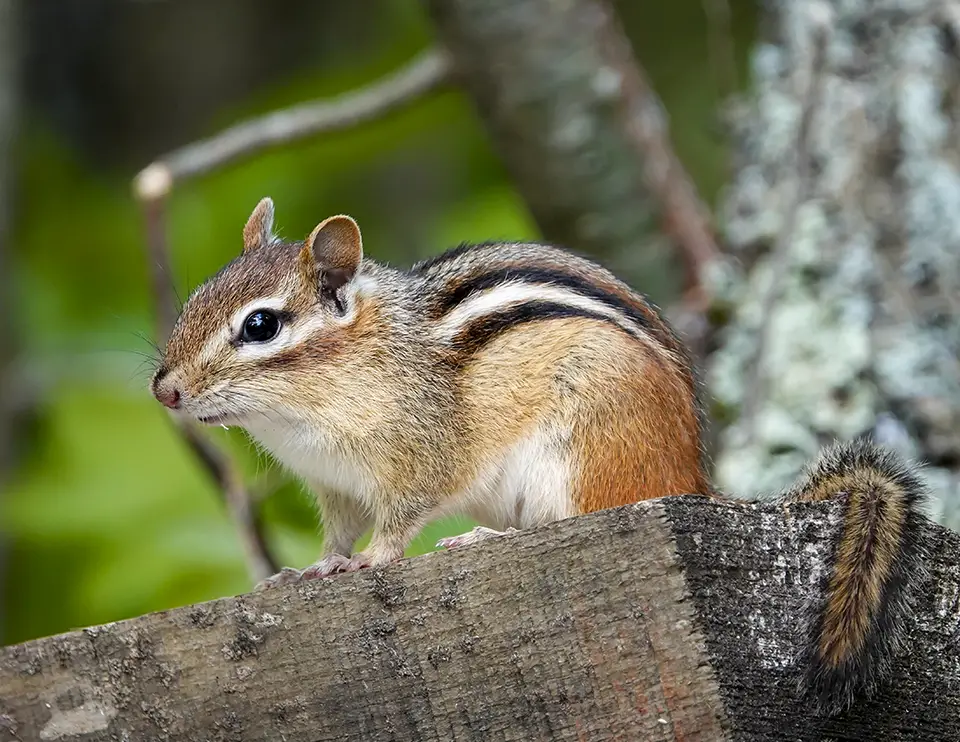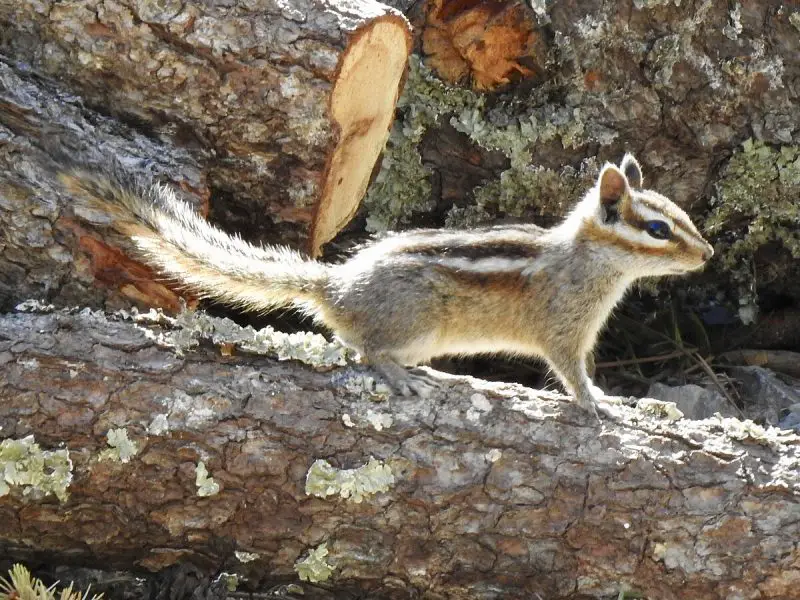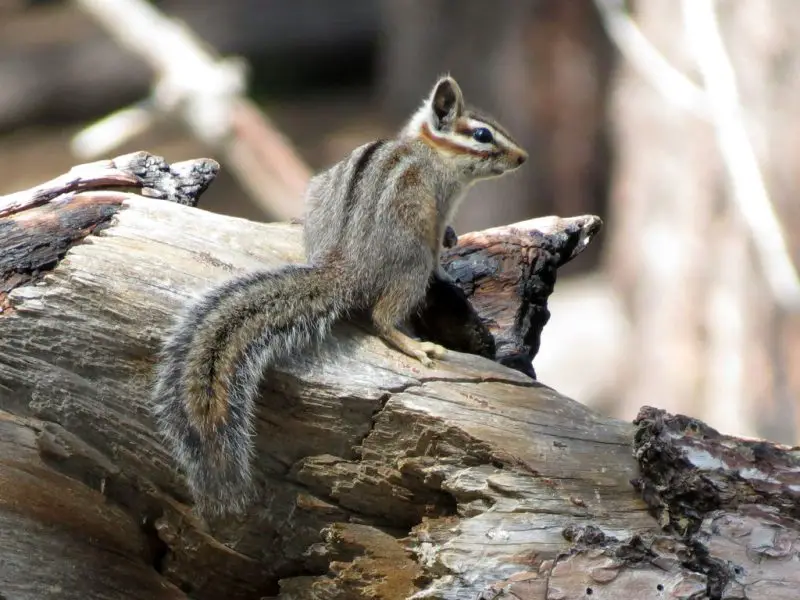Texas, known for its vast landscapes and ecological diversity, is home to several small mammals that thrive across its forests, grasslands, and rocky outcrops. Among these, chipmunks hold a special charm with their quick movements, bold stripes, and cheek-stuffing antics. Although Texas isn’t the state most associated with chipmunks, a few species have managed to adapt remarkably well to its varied terrain.
Observing chipmunks in Texas can be a rewarding experience for wildlife enthusiasts and casual nature lovers alike. Their curious behavior, bright eyes, and distinct calls make them easy to identify once you know where to look. These tiny ground-dwelling rodents are not only fascinating in appearance but also play an important ecological role in seed dispersal and forest regeneration.
In this guide, we’ll explore the three types of chipmunks found in Texas — describing their identifying features, habits, habitats, and distribution. By the end, you’ll know exactly which chipmunk species you’re seeing on your next hike or backyard adventure.
Eastern Chipmunk (Tamias striatus)

Identification and Appearance
The Eastern Chipmunk is the most widespread species in North America and can occasionally be found in the northeastern regions of Texas, particularly near the forested border areas. This small, ground-dwelling rodent typically measures about 8 to 10 inches in length, including its tail, and weighs around 2 to 5 ounces. It has a reddish-brown coat accented by five dark brown stripes running down its back and sides, separated by lighter cream-colored lines. Its underbelly is pale gray or white, and its tail is somewhat bushy with reddish tinges.
One of the most recognizable features of the Eastern Chipmunk is its large cheek pouches, which it uses to carry seeds, nuts, and berries back to its burrow. When its cheeks are full, the animal’s face appears comically round, making it easy to identify even from a distance. Its bright black eyes, small rounded ears, and quick darting movements add to its energetic charm.
Behavior and Diet
Eastern Chipmunks are solitary animals, each maintaining an underground burrow with multiple entrances and escape tunnels. These burrows can stretch several feet underground and contain food chambers for winter storage. The species is diurnal, meaning it’s active during the day — most often seen in the early morning or late afternoon.
Their diet mainly includes acorns, seeds, berries, mushrooms, and small insects. They also occasionally consume bird eggs or young nestlings if the opportunity arises. Throughout the warmer months, they gather and hoard large amounts of food to sustain themselves through periods of inactivity in winter.
Habitat and Range in Texas
In Texas, Eastern Chipmunks are primarily spotted in northeastern woodlands, especially in the Piney Woods region near the border with Louisiana and Arkansas. They prefer deciduous forests, wooded slopes, and areas with abundant ground cover like logs, brush, or leaf litter. They can sometimes be seen along hiking trails, park edges, or suburban yards that border forests.
Though their populations in Texas are scattered and less dense than in eastern U.S. states, they are adaptable and occasionally expand their range following mild winters and plentiful acorn crops.
Gray-footed Chipmunk (Neotamias canipes)

Identification and Appearance
The Gray-footed Chipmunk, also known as the Texas chipmunk, is one of the few species truly native to the state. It is most often found in western Texas, particularly in the Davis Mountains, Guadalupe Mountains, and Chisos Mountains. Adults measure around 7 to 9 inches long, including the tail, and typically weigh between 1.5 and 3 ounces. The fur is a rich reddish-brown to cinnamon color with five distinct dark dorsal stripes separated by pale gray bands.
As its name suggests, this chipmunk has grayish feet and legs, a trait that sets it apart from other species. Its tail is long and slightly flattened, with blackish edges and a reddish underside. The facial stripes are bold and striking, with a white line running above and below each eye, giving it a vivid, expressive look.
Behavior and Diet
Gray-footed Chipmunks are highly active during daylight hours and are known for their energetic foraging and alert posture. They often perch upright on rocks or logs to scan for predators before scurrying off. Their diet includes pine nuts, acorns, fruits, fungi, grass seeds, and insects, making them key players in the dispersal of seeds and spores in Texas mountain ecosystems.
Unlike some chipmunks that hibernate completely, the Gray-footed Chipmunk remains semi-active through the colder months, occasionally emerging from its burrow to feed during warm winter days. Their vocalizations include sharp “chip-chip” calls, which they use to warn others of predators such as snakes, hawks, or foxes.
Habitat and Range in Texas
This chipmunk species thrives in pine-oak woodlands, rocky canyons, and montane habitats at elevations between 4,000 and 8,000 feet. It prefers shady areas with ample rock cover, where it can build burrows beneath boulders or tree roots. In Texas, its core range lies within the Davis Mountains and Big Bend National Park, though smaller populations exist in nearby ranges.
Because of its limited distribution, the Gray-footed Chipmunk is considered a species of concern in some conservation assessments. However, stable habitats in remote mountainous regions help maintain healthy populations. For nature enthusiasts visiting these areas, spotting this elusive chipmunk is a highlight of any wildlife encounter.
Cliff Chipmunk (Neotamias dorsalis)

Identification and Appearance
The Cliff Chipmunk is a sleek and agile species found in far western Texas, particularly in rocky desert canyons and cliffsides. Measuring about 8 to 9 inches in length, including the tail, and weighing up to 3 ounces, this chipmunk is slightly larger than the Gray-footed species. Its fur is grayish-brown on the upper body with a distinct black dorsal stripe running from the head to the tail base. The sides are tinged with cinnamon or rust hues, while the underparts are creamy white.
This species has a noticeably shorter and less bushy tail compared to the Eastern Chipmunk, an adaptation that aids its balance while climbing steep, rocky surfaces. Its facial stripes are subtle, with pale white lines above and below the eyes, and its ears are slightly pointed and proportionally larger for its head size.
Behavior and Diet
Cliff Chipmunks are excellent climbers and spend much of their time navigating cliffs, boulder fields, and canyon walls. Unlike many chipmunks that prefer forest floors, this species frequently ventures onto ledges, rock piles, and even small trees to search for food. They are diurnal and very alert, quickly retreating to crevices when alarmed.
Their diet consists of juniper berries, seeds, acorns, cacti fruits, and insects. They are known to cache food in small crevices within rocks rather than building extensive underground burrows. During hot summer afternoons, they often rest in shaded rock cracks to avoid overheating.
Habitat and Range in Texas
In Texas, Cliff Chipmunks are found mainly in the Trans-Pecos region, including Guadalupe Mountains National Park, Big Bend National Park, and nearby canyonlands. They prefer rocky habitats with sparse vegetation, especially areas with pinyon-juniper or oak scrub. The species is also common across New Mexico, Arizona, and northern Mexico, indicating its strong adaptation to arid, mountainous environments.
Their coloration provides excellent camouflage among desert rocks, making them harder to spot than other chipmunks. Observers often hear their quick chirps or rustling sounds before seeing the animal dart across rocks.
Best Time and Places to Spot Chipmunks in Texas
Seasonal Activity
Chipmunks in Texas are most active from March through October, when temperatures are moderate and food sources are abundant. During early mornings and late afternoons, they can be seen gathering seeds, sunning themselves on rocks, or darting across trails. Activity slows in the hottest summer months and during cold winter spells, though Gray-footed Chipmunks may remain intermittently active.
Top Locations
For nature lovers hoping to see these agile creatures, the best viewing areas include:
-
Big Bend National Park – home to both Gray-footed and Cliff Chipmunks, particularly around Chisos Basin trails and the Lost Mine Trail.
-
Davis Mountains State Park – excellent for spotting Gray-footed Chipmunks along shaded canyons.
-
Guadalupe Mountains National Park – a prime habitat for the Cliff Chipmunk.
-
Northeastern Piney Woods – occasionally home to Eastern Chipmunks along forest edges near the Texas-Louisiana border.
Bringing binoculars or a camera with a zoom lens helps spot chipmunks at a safe distance without disturbing their behavior.
Conservation and Ecological Role
Chipmunks play a vital role in maintaining healthy ecosystems. Their habit of hoarding seeds and nuts contributes significantly to forest regeneration, as many of the cached seeds germinate and grow into new plants. They also serve as an important food source for predators such as hawks, owls, snakes, and bobcats.
In Texas, chipmunk populations are relatively stable, but habitat loss due to urban development and wildfires poses ongoing threats. Conservation efforts that preserve forest understories, native vegetation, and rocky refuges ensure these animals continue to thrive in their natural environments.
For homeowners and campers, chipmunks are mostly harmless. However, they can occasionally enter campsites in search of crumbs or nesting materials. Observing them from a distance without feeding them is key to maintaining their wild instincts.
Interesting Facts About Texas Chipmunks
-
Speed and Agility: Chipmunks can run up to 15 miles per hour and jump more than three feet when startled.
-
Communication: They use a series of short “chip” sounds and tail flicks to warn others of nearby predators.
-
Cheek Storage: A single chipmunk can carry multiple acorns or dozens of seeds at once in its expandable cheek pouches.
-
Burrow Systems: Their underground homes may include separate nesting, food storage, and escape chambers.
-
Semi-hibernation: Unlike true hibernators, some Texas chipmunks wake periodically during winter to eat stored food.
FAQs About Chipmunks in Texas
What do chipmunks eat in Texas?
Texas chipmunks consume a wide range of foods including acorns, pine nuts, fruits, berries, seeds, insects, and mushrooms. They are opportunistic feeders and often adapt their diet based on seasonal availability.
Are chipmunks common throughout Texas?
No, chipmunks are mostly confined to eastern and western parts of the state, where forested and mountainous habitats exist. They are rare in central and southern Texas due to limited suitable cover and higher temperatures.
Do chipmunks hibernate in Texas?
Not completely. While chipmunks reduce their activity during colder months, especially in higher elevations, species like the Gray-footed Chipmunk may emerge on warm days to forage.
Can chipmunks be kept as pets in Texas?
Wild chipmunks should never be kept as pets. Texas wildlife laws protect native species, and keeping them without permits is prohibited. Observing them in the wild is the best way to enjoy their natural behavior.
How can I attract chipmunks to my yard?
Planting oak, hickory, and native shrubs that produce seeds and berries can attract chipmunks if you live near their natural habitats. Providing water sources and leaving some natural ground cover also encourages visits.
Conclusion
Chipmunks are among the most endearing small mammals in Texas, adding life and movement to forests, mountains, and rocky canyons. While the Eastern, Gray-footed, and Cliff Chipmunks each occupy different ecological niches, all share an energetic and curious personality that captivates observers.
From the wooded slopes of the Piney Woods to the rugged cliffs of Big Bend, these tiny striped rodents remind us of the intricate web of wildlife thriving across the Lone Star State. With responsible conservation and continued habitat protection, chipmunks will remain a delightful part of Texas’s natural landscape for generations to come.






